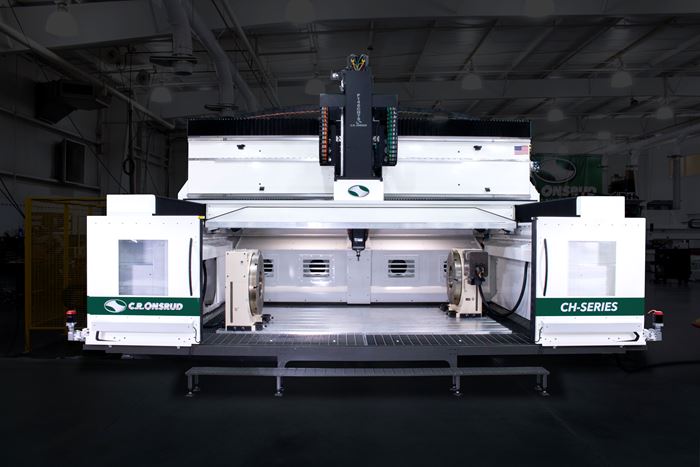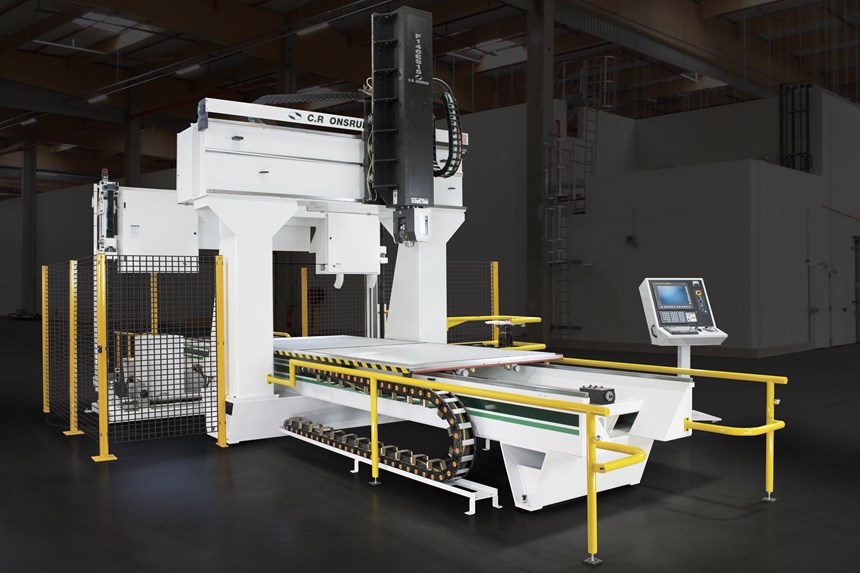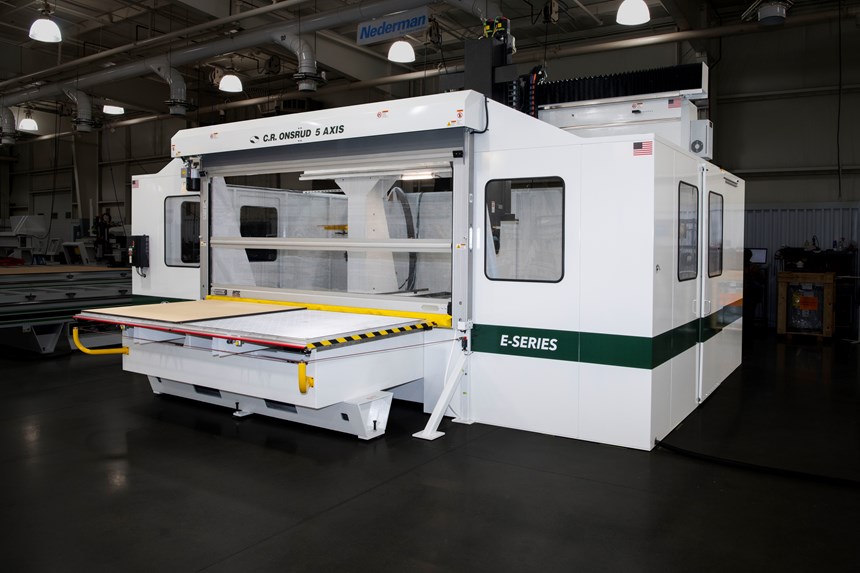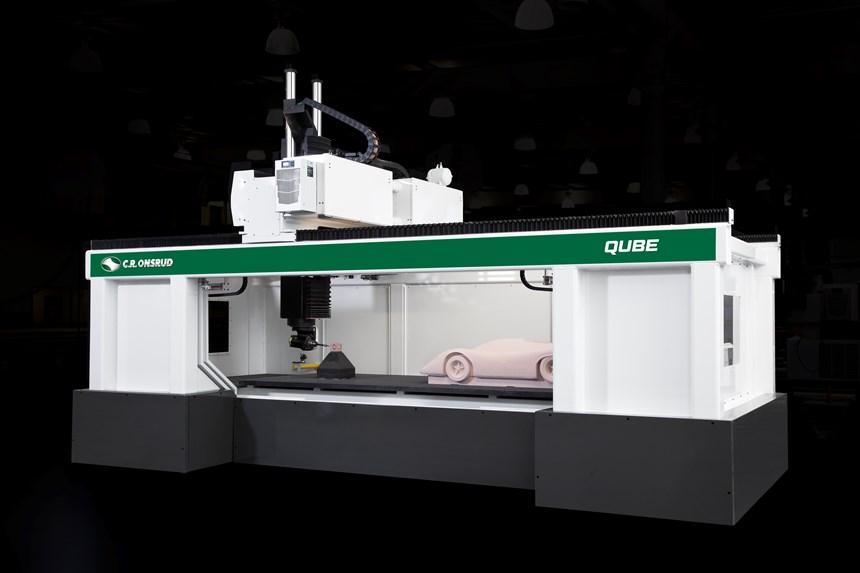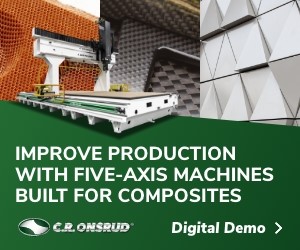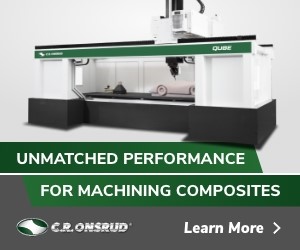Share
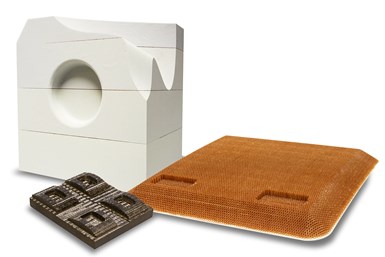
The unique structural characteristics of composite materials and cost-to-weight ratio make it a valuable commodity across a wide range of industries. Having the most versatile CNC machine may be the best investment.
A considerable amount of time and investment goes into finding the right CNC solution to efficiently and effectively machine composites. The last thing manufacturers want is to invest in the wrong machine and be paying for that mistake for years to come. With little room for error, it is important to understand how different materials, machinery characteristics, and machinery options affect machining speed, precision, service, and overall production.
1. Spindle HP & RPM - Consider high RPM, low torque
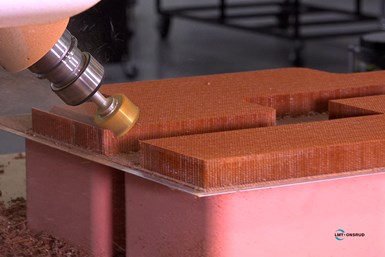
High-speed Honeycomb Core Machining. Watch a demo of the C.R. Onsrud E-Series.
Material density plays a key role in determining the best spindle RPM, HP, and torque for an application. To aggressively machine hard materials, such as steel and Inconel® , some traditional machining centers typically are equipped with high torque, low RPM spindles that operate at a maximum of 12,000 RPM. When it comes to composites (such as foam, tooling board, or carbon fiber), a high torque, low RPM spindle is too slow to reach optimal chip load and thus results in inefficient (slower) composite machining. Instead, high RPM (18,000 - 24,000), low torque spindles are more efficient in reducing cycle time, lengthening tool life, and improving overall spindle reliability. For the best of both worlds (composite and nonferrous metal machining), consider a spindle capable of running at 20,000 - 24,000 RPM and higher feed rates for lighter-duty materials but also can operate in the 10,000 - 12,000 range for harder materials that need more torque.
2. Dust Containment / Collection - Improve employee safety and machine longevity
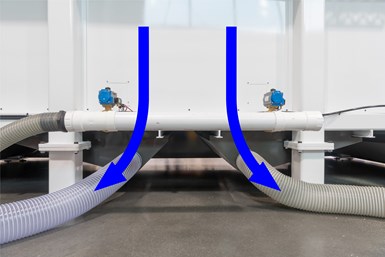
Dust Collection Tray, Optional Vacuum Ports. Remove harmful dust and debris from fully enclosed CNC Machines. Watch the machine walk-thru.
Machining composites often creates a large amount of dust and debris that can cause health problems to workers and damage to the machine. Some composite dusts can lead to lung damage if inhaled and some are electrically conductive, so they can damage machine circuits and cause spindle or machine wear at an increased rate. Thus, choosing a CNC solution with sufficient dust collection and properly sealed and covered components is imperative when working with composites. Some additional considerations for handling abrasive material machining include air knife systems, downdraft tables, and/or full enclosures.
 5-Axis Programmable Dust Hood. Watch a demo. |
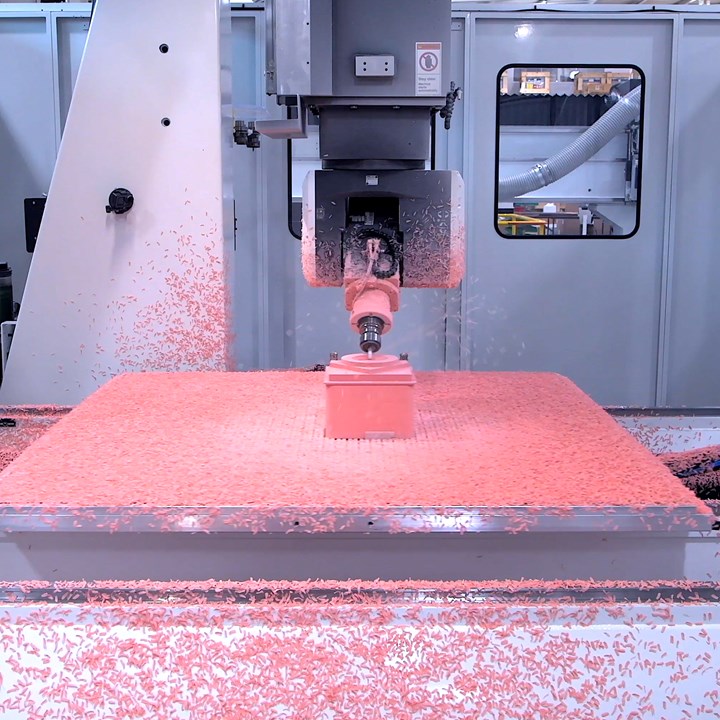 Fully Enclosed CNC Router. Reduce harmful debris and airborne particles. Watch a demo. |
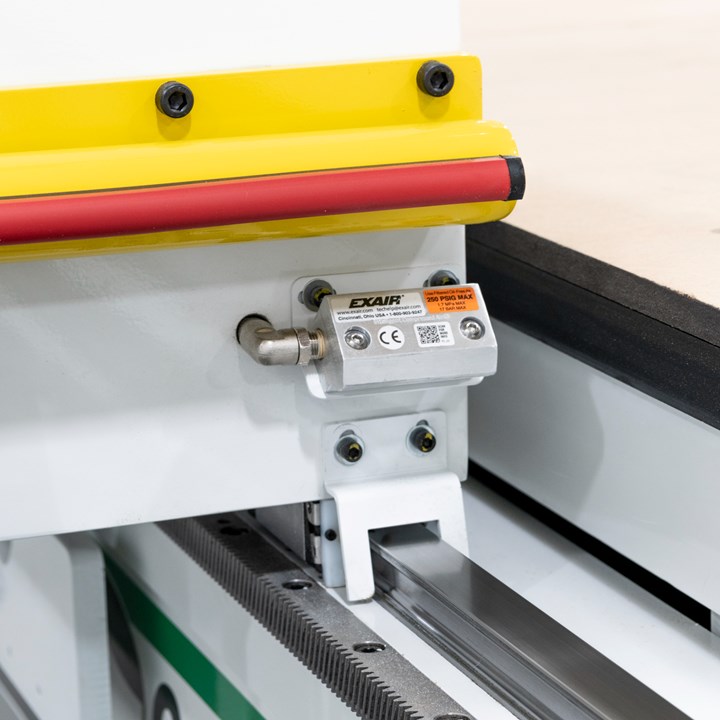 Air Knife. Remove Dust & Debris with CNC-Controlled Airblasts. Watch up close. |
3. 3-Axis vs. 5-Axis - Depends on the part’s geometry
When machining complex 3D composite components, a 5-axis machine is more efficient than a 3-axis machine and provides a greater return on investment over time. With a 5-axis machine, multiple sides of a part can be machined without having to manually reposition material or swap out tooling for angled heads. A 3-axis machine can perform multi-face machining as well but at a much slower rate as it requires an operator to stop the machine and reposition the part after each operation. To achieve 5-sided milling, drilling, tapping, and/or sawing operations without a 5-axis machine or without having to manipulate parts, consider adding a 4th axis and utilize angled heads, known as aggregates.
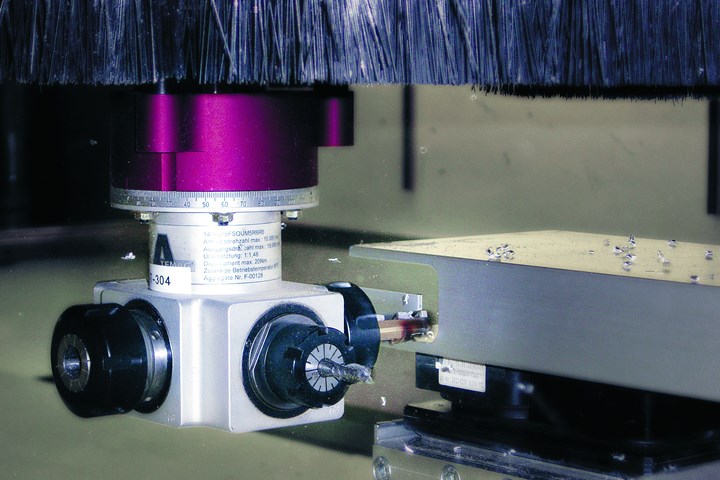 4th Axis Aggregates. Mill & Drill Side Slots/Holes. Watch more on Chips & Tips |
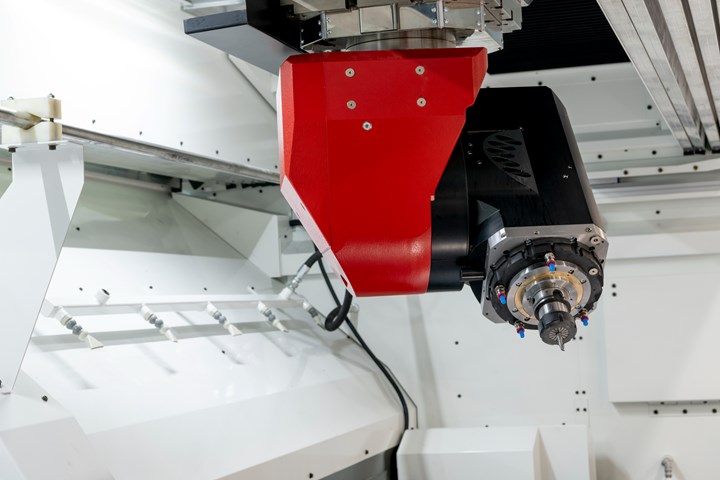 Fast Multi-Sided Machining and Angle Cuts. Walk-thru a 5-Axis CNC Milling Center |
4. Rigidity - For speed, tool life, and machine longevity
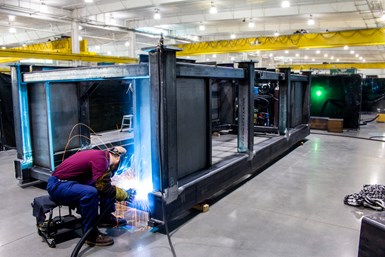
Troutman NC, C.R. Onsrud CNC Manufacturing Plant. Take a tour.
Due to the abrasive and unique structure of composites, it is worth investing in a CNC machine with fully reinforced structural integrity and rigidity. A sturdy design reduces vibrations and tool deflection to provide top acceleration/deceleration speeds, long tool life, and low maintenance and repair costs over the lifetime of the machine compared to less rigid, light-duty machinery. From an upfront cost perspective, a machine can be made cheaper by reducing the structure and quality of its components; however, it will fail to have the longevity of a better built machine and ultimately will result in a higher total cost of ownership.
5. Work Envelope - Make sure it fits, and consider the benefits of larger tables
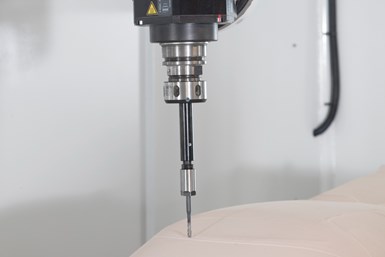
Large-format Tooling Board Demo. 917 Porsche. Watch now.
In addition to the type of composite material being machined, factor in its size, and select a work envelope accordingly. At a minimum, the work envelope needs to be larger than the largest part being machined. However, depending on production goals, buying a machine with twice the work envelope that supports pendulum processing, where materials are safely loaded/unloaded while the machine is still performing cutting operations on another part, will significantly speed up overall production time. Other advantages of large tables include batch processing which allows you to fixture multiple parts at one time and machine continuously without having to unload and reload.
Note - When searching for 5-axis machining solutions, be sure to consider the work envelope while the machine’s spindle is at 90 degrees.
6. A Second Spindle (option) - Doubles the throughput
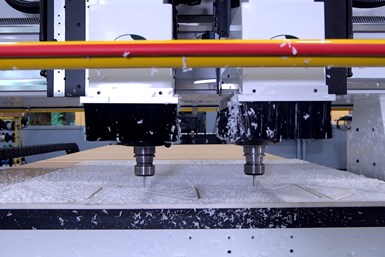
M-Series Twin Spindle. Watch the Plastic Machining Demo.
A second spindle is valuable when machining small or long composite parts at high volume. Adding a second spindle doubles the machine’s throughput without increasing its footprint. Depending on the machine manufacturer, take it a step further by adding up to 8+ spindles for maximum part production.
7. Two Tables (option) - Continuous operation
Similar to a pallet changer for a traditional CNC machine center, a second table allows an operator to load composite material onto, or unload finished parts from, one of the tables while still machining on the other table, so production never has to stop. Additionally, on some machines, two independent tables can be electronically “locked” together to process extra-large parts.

Dual Process Machining. For High-throughput Production. Watch Video
Dual Process - Combine a multi-spindle option with a multi-table option to unlock the ability to perform what is known as Dual Process machining. With this technology, one spindle performs an operation on one of the tables while the second spindle performs a completely separate operation on the other table, essentially turning one machine into two in the footprint of one machine.
8. Return on Investment - Planning for the long haul
The cost of the CNC machine matters, but more importantly is the return on investment. A cheaper or lesser machine that fails to meet the unique challenges of machining composites and that has to be replaced after only a few years can cost a company more in the long run, not just in direct costs but in lack of part quality, production downtime, program delays, and added frustration. As John Ruskin says, “There is hardly anything in the world that some man cannot make a little worse and sell a little cheaper, and the people who consider price only are this man’s lawful prey.” It is worth the time to work with experts in the field to ensure the machine being purchased is the very best for the specific composites manufacturing application.
9. Support and Service - Questions to ask before buying
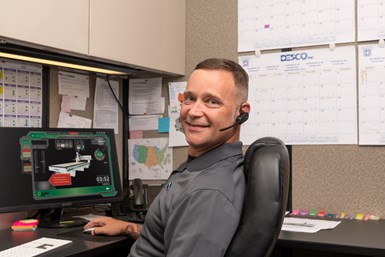
C.R. Onsrud Remote Support, Troutman NC.
Asking the right questions provides an understanding of the service and support offered by an original equipment manufacturer (OEM) or dealer. Before making a purchase, some key questions to ask include:
- How many dedicated CNC technicians are there (not for other machinery)?
- Is there 24/7 phone support for emergencies?
- Is there remote login support?
- What is the lead time on replacement parts?
- What is the lead time on replacement spindles specifically (in the event of a crash)?
- At what point do machine parts become obsolete and are no longer made or carried?
- Where is the service department located?
- Where are spare machine parts manufactured and/or stored?
10. American Made vs. Imports - Some food for thought
Buying an American-made CNC machine means:
- Parts and services for uncommon components can be shipped out ASAP rather than waiting for weeks, or even months, on an overseas shipment.
- A heavy-duty, high-quality build is possible vs. a machine that must fit into an overseas container.
- American labor laws and manufacturing requirements are followed, ensuring fair and safe conditions and business practices.
- Helping to employ U.S. workers and supporting the American economy.
- A positive impact on future generations, both job-wise and environmentally.
- Promoting American independence.
Want to learn more?
Call a composites machinery expert today.
1-704-508-7000 | www.cronsrud.com | info@cronsrud.com | Youtube | Facebook | Instagram

